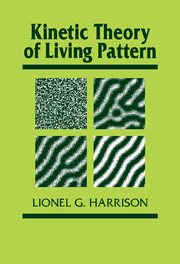The Shaping of Life
Biological development, how organisms acquire their form, is one of the great frontiers in science. While a vast knowledge of the molecules involved in development has been gained in recent decades, big questions remain on the molecular organization and physics that shape cells, tissues and organisms. Physical scientists and biologists traditionally have very different backgrounds and perspectives, yet some of the fundamental questions in developmental biology will only be answered by combining expertise from a range of disciplines. This book is a personal account by Professor Lionel Harrison of an interdisciplinary approach to studying biological pattern formation. It articulates the power of studying dynamics in development: that to understand how an organism is made we must not only know the structure of its molecules; we must also understand how they interact and how fast they do so.
- Provides an historical perspective on the development of this field with relevance for current quantitative and systems biology
- Mathematics is kept to a minimum and any calculus-dependent points are also explained verbally
- Thought-provoking case study examining the application of physical chemistry and mathematics to study developmental biology
Reviews & endorsements
"Harrison successfully weaves a qualitative description of reaction dynamics, with brief derivations of pertinent equations... The book gives fascinating insight into the creative process of a decidedly interdisciplinary scientist. Recommended."
B.D. Spiegelberg, Choice Magazine
"In an age of ever-increasing pressures to pursue what is fashionable in science - be it to secure a position, tenure, funding, prestige, or other personal rewards - Harrison's book, and life, provides a felicitous allegory in favor of engaging in science that, while less stylish at the moment, touches on the truly infinite questions."
Joshua Milstein, Physics Today
"Harrison is methodical and thorough in his approach... the organization is clear, from the concise table of contents to the expansive library of resources in which he consistently draws specific and pertinent references. To those with interest in the evolution and theory at the interfact of physical chemistry and the biological sphere, this book offers a pithy and well-informed perspective."
Rebecca Bender, Michigan Technological University for Plant Science Bulletin
Product details
February 2011Hardback
9780521553506
272 pages
235 × 158 × 16 mm
0.56kg
61 b/w illus.
Available
Table of Contents
- Foreword Thurston Lacalli
- Preface
- Acknowledgements
- 1. Organizer. Organize thyself
- Part I. Watching Plants Grow:
- 2. Branching: how do plants get it started?
- 3. Whorled structures
- 4. Dichotomous branching
- 5. Micrasterias and computing patterning along with growth
- Part II. Between Plants and Animals:
- 6. The emergence of dynamic theories
- 7. Classifying developmental theories as physical chemistry
- Part III. But Animals are Different:
- 8. The dreaded fruit fly
- 9. Various vertebrate events
- Epilogue
- References
- Index.






